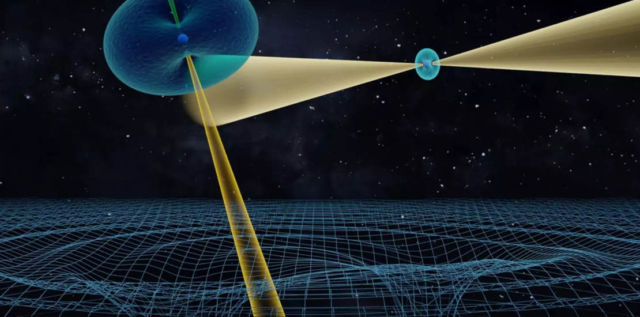Astronomical observations of pulsars have provided that General Relativity is indeed the best theory about gravity.
Physicists after 16 year of studying binary pulsars (two extreme stars), confirmed the famous theory of general relativity of Albert Einstein.
The theory of general relativity passes a range of precise tests set by pair of extreme stars.
An international team of researchers from ten countries led by Michael Kramer from the Max Planck Institute for Radio Astronomy in Bonn, Germany, has conducted a 16-year long experiment to challenge Einstein’s theory of general relativity with some of the most rigorous tests yet.
Above image: Artistic impression of the Double Pulsar system, where two active pulsars orbit each other in just 147 min. Credit Michael Kramer/MPIfR
Their study of a unique pair of extreme stars, so called pulsars, involved seven radio telescopes across the globe and revealed new relativistic effects that were expected and have now been observed for the first time. Einstein’s theory, which was conceived when neither these types of extreme stars nor the techniques used to study them could be imagined, agrees with the observation at a level of at least 99.99%.
More than 100 years after Albert Einstein presented his theory of gravity, scientists around the world continue their efforts to find flaws in general relativity. The observation of any deviation from General Relativity would constitute a major discovery that would open a window on new physics beyond our current theoretical understanding of the Universe.
The research team’s leader, Prof Michael Kramer from the Max Planck Institute for Radio Astronomy (MPIfR) in Bonn, Germany, says: “We studied a system of compact stars that is an unrivalled laboratory to test gravity theories in the presence of very strong gravitational fields. To our delight we were able to test a cornerstone of Einstein’s theory, the energy carried by gravitational waves, with a precision that is 25 times better than with the Nobel-Prize winning Hulse-Taylor pulsar, and 1000 times better than currently possible with gravitational wave detectors.” He explains that the observations are not only in agreement with the theory, “but we were also able to see effects that could not be studied before.”
source Max Planck Institute






Leave A Comment